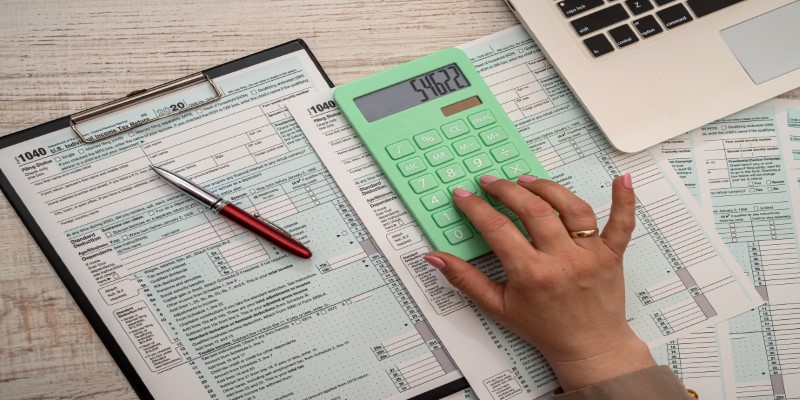What are IRS Payment Plans – A Detailed Guide
Dec 18, 2023 By Triston Martin
One of the most significant stresses that people have in their lives is paying the unwanted tax. For some people, taxes might not seem much, but for individuals who do not have enough money to pay all of their taxes at once, it can be a considerable challenge. This is why the IRS has different plans through which you can resolve this problem.

The IRS payment plans are a perfect way through which you can spread your bills and then pay the taxes over some time. If you are someone who does not know much about the IRS payment plans or how they work, then this article has everything covered. So, let's jump right into the article and have a look at these points.
What are IRS Payment Plans?
If you are a taxpayer, then we are sure you know about the IRS; however, not many people know that they offer different payment plans through which people can make taxing a lot simpler and more affordable. Basically, these plans are made so that people who can't afford to pay their tax bills in one go can pay them over some time in installments.
There are a lot of different options that come with the IRS payment plans. Here, you can go for long-term plans and even short-term payment plans to pay your tax bills. However, it is essential that you know you'll have to charge up for these plans, and there are different fees that you need to pay in such cases.
If you want to apply for the long-term plan, then you need to meet specific criteria. If you are someone who owes about $500000 or less for the taxes, interest, and penalties companies, you can apply for this. Here, you will get about 180 days or more to pay your tax bill after applying for the tax file. If you are paying with the help of Direct Debut on a monthly basis, then the setup fee will be $31 for online applying, and if you apply through mail or in person, then you need to pay $107.
There is another type of long-term payment in which you pay through other payment methods. Here, the setup fee is about $130 for the online application, and you need to pay about $225 to apply in person. In both the long-term plans, you will be charged interest fees and even late submission charges.
As far as the short-term payment plan is concerned, this is applicable for people who owe $ 100,000 or less on their taxes. Here, you will get 180 days or less to pay the tax bills and complete the installments. With the short-term payment plan, there is no interest fee, and no interest will be applied.
How to Apply for the IRS Payment Plans?

The next question that might come to your mind is how to apply for the IRS payment plans. There are different ways through which you can apply for the IRS payment plans. However, before applying, you need to make sure you are eligible for the plan and what kind of plan you want to choose.
The fastest and most straightforward way through which you can apply for these plans is through the online application. There is a proper IRS payment plan application portal that you can use for the application process. Following are some of the things that you need to enter in the portal in order for the application to be approved.
- First, you will need a tax transcript and an identity protection PIN to log in to your account. If you don't already have that, then you need to make an account on which you need to enter all the information.
- Once you have the account, you need to enter a valid email address.
- You also need to have Photo identification such as a driver's license, passport, or even a state ID.
- Your Social Security number will be needed.
- There should be access to a smartphone or a webcam so that you can verify your identity.
- You also need to do the multi-factor authentication.
Other than this, you can even apply through the mail. Here, you will have to fill out the IRS form 9465 and even with the help of phone by calling the IRS main number.
Eligibility for the IRA Payment Plans:

Following are some of the different eligibility criteria that you should meet if you want to qualify for IRA payment plans.
- If you owe about $ 100,000, then you can easily apply for the plans.
- If you are married, and you and your spouse have filed together, then also, if you owe more than $100000, you can apply for these plans.
- Other than this, if you have filed for the tax returns on time for the last five years, then you can also apply for this.
- If you agree to pay the tax debt in full within the three-year interval of 72 months, then you are also eligible for the IRS payment plans.
- You aren't able to pay the taxes in full at one time, then you can go for this option.
- You should not be in any kind of bankruptcy proceedings when you apply for this plan.
Final Words:
There are a lot of different plans and programs that the government provides the people so that they don't have to worry a lot about taxes. Among these plans, people don't know about the IRS payment plan. This is one of the best plans that can be used to reduce the burden of the tax bills, as because of this, you can pay the bills in installments. Hence, this is a perfect way through which you can maintain the taxes and pay them as time passes by.

Unlock the Secrets: How to Get Your Hands on Vanguard VTI Total Stock Market ETF Units
Mar 16, 2024
Discover how to invest in Vanguard VTI Total Stock Market ETF: steps, benefits, and why it's a smart choice for US market exposure

How to Check Your Credit Card Application Status
Dec 01, 2023
Get the help you need to know your credit card application status! Find out what steps you should take and how to make sure the process runs smoothly.

Definition of Rental Real Estate Loss Allowance
Jan 07, 2024
The amount of passive losses from real estate you are permitted to deduct from your active income annually is the rental real estate loss allowance.

5 Best Stock Trading Apps for 2022
Oct 25, 2023
If you are new to the stock market, or if you have been trading stocks for a while but are looking for a better way to do it, you may be wondering what the best stock trading apps are. In this blog post, we will discuss the best stock trading apps for beginners and for experienced traders.

Adding Stimulus Money on Your Tax Returns
Dec 17, 2023
Do you want to explore the fundamentals of adding stimulus money to your tax return? Do give this guide a thorough read.

What Is A Price Protection And How To Use It?
Jan 12, 2024
It may be frustrating when you buy something to find out that it will soon be on sale. On the other hand, your credit card might save the day.

Day-Trading the Non-Farms Payrolls (NFP) Report
Feb 14, 2024
The Non-Farms Payrolls report is one of America's most anticipated news announcements. It provides economists with a picture of how well the economy is doing in terms of employment or otherwise. How can day traders take advantage of this opportunity and trade the NFP report?

Will Credit Card Churning Work?
Oct 19, 2023
Credit card churning, while it may seem appealing as a means to optimize rewards and points, has major drawbacks. It's a dangerous tactic that could lower your credit score, raise your interest rate, and result in additional overdue penalties and charges.

Navigating Your Options: An In-Depth Review of HSBC Personal Loans
Feb 03, 2024
An informative guide on HSBC personal loans, covering interest rates, application steps, benefits, and potential drawbacks.

Everything You Should Know About Time to Rebalance Your Portfolio
Jan 03, 2024
Investing in the stock market can significantly grow your wealth and achieve your financial goals. However, as with any investment strategy, there are risks involved. One way to manage these risks is to rebalance your portfolio regularly

All About a Mortgage Accelerator Loan
Jan 25, 2024
Several other factors must be taken into account before settling on a course of action. For instance, if you prioritise paying off your mortgage over saving for retirement or college for your children, you might lose out on more money in the long run by neglecting those other goals.

Top Paying Annuity Rates
Dec 23, 2023
The annual growth rate of an annuity, expressed as a percentage, determines how much money will be received from the annuity each year. The insurance company or other financial institution issuing the annuity contract determines the rate. The payout rate of an annuity is the annual percentage rate at which the principal sum of the annuity is distributed to the beneficiary each year.